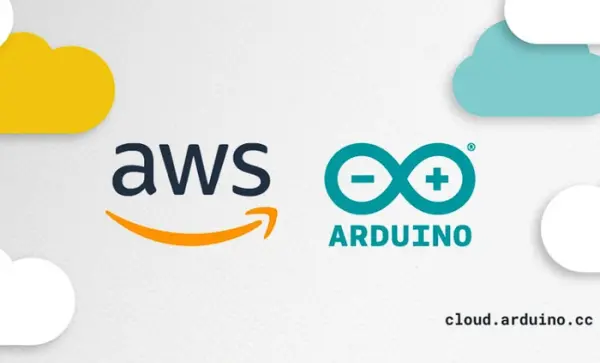Arduino has unveiled a strategic alliance with Amazon Web Services (AWS), a partnership aimed at bolstering its edge hardware and cloud services. This collaboration is set to offer an expanded range of options for Arduino products and Arduino Cloud customers, enabling them to seamlessly integrate AWS into their Internet of Things (IoT) projects.

Since its inception three years ago, Arduino Cloud has been operating on AWS infrastructure, demonstrating the longstanding relationship between the two tech giants. Today, Arduino Cloud processes a staggering 4 billion device messages each month, positioning it as one of the most significant IoT Software as a Service (SaaS) platforms deployed on AWS.
Arduino Cloud for Business
The rapid growth of Arduino’s Cloud for Business solution is another testament to the success of this partnership. Commercial customers have been vocal in their praise for its core features and integrations with Edge Impulse and Foundaries.io.
In a bid to support medium to large customers in architecting custom solutions, Arduino has also joined the AWS Independent Software Vendor (ISV) program. This program is specifically designed for SaaS providers built on AWS.
The partnership also opens up access to a vast network of over 100,000 AWS Partners worldwide. This network will streamline the process of integrating each cloud with one another, making it easier for businesses to leverage the power of cloud computing.
In addition, Arduino currently has 12 devices in the pipeline to achieve AWS Device Qualification status. Once qualified, these devices will be officially recognized by AWS, providing customers with architectural documentation and further enhancing the credibility of Arduino’s offerings.
The overarching goal of the Arduino and AWS partnership is to simplify and accelerate the deployment of commercial IoT and cloud-based solutions. By connecting the capabilities of edge hardware with the potential of cloud computing, this alliance is set to revolutionize the way businesses operate in the digital age.
Other articles you may find of interest on the subject of Arduino :
- Low-cost thermal camera built using Arduino
- Arduino UNO R4 Minima vs UNO R4 WiFi boards
- DIY Arduino Wind Speed Meter Anemometer Project
- New Arduino Nano ESP32 IoT microcontroller launches €18
- Arduino Inputs and Outputs a beginners guide
Amazon Web Services (AWS)
mazon Web Services (AWS) is a subsidiary of Amazon that provides on-demand cloud computing platforms and APIs to a diverse range of clients, from individuals to large enterprises and governments. These services are offered on a metered pay-as-you-go basis, allowing users to scale their infrastructure needs and only pay for what they use.
At the core of AWS’s offerings is its Infrastructure as a Service (IaaS) model, epitomized by services like Amazon EC2 (Elastic Compute Cloud). This service provides virtual servers with scalability as a defining feature. For those looking for a more managed environment, AWS offers Platform as a Service (PaaS) solutions such as AWS Elastic Beanstalk, where developers can simply deploy their application code, and the underlying infrastructure management is handled by AWS.
Storage and database needs are comprehensively addressed by AWS. The Amazon S3 (Simple Storage Service) provides scalable object storage, while Amazon EBS (Elastic Block Store) caters to block storage requirements. On the database front, AWS provides managed services ranging from relational databases with Amazon RDS (Relational Database Service) to NoSQL solutions like Amazon DynamoDB.
Network security and robustness are foundational to cloud services. AWS allows users to craft isolated networks within its environment using the Amazon VPC (Virtual Private Cloud). Additionally, content delivery is accelerated and optimized via Amazon CloudFront, AWS’s content delivery network (CDN) service.
Source: Arduino and AWS partner to enhance its edge hardware and cloud services
